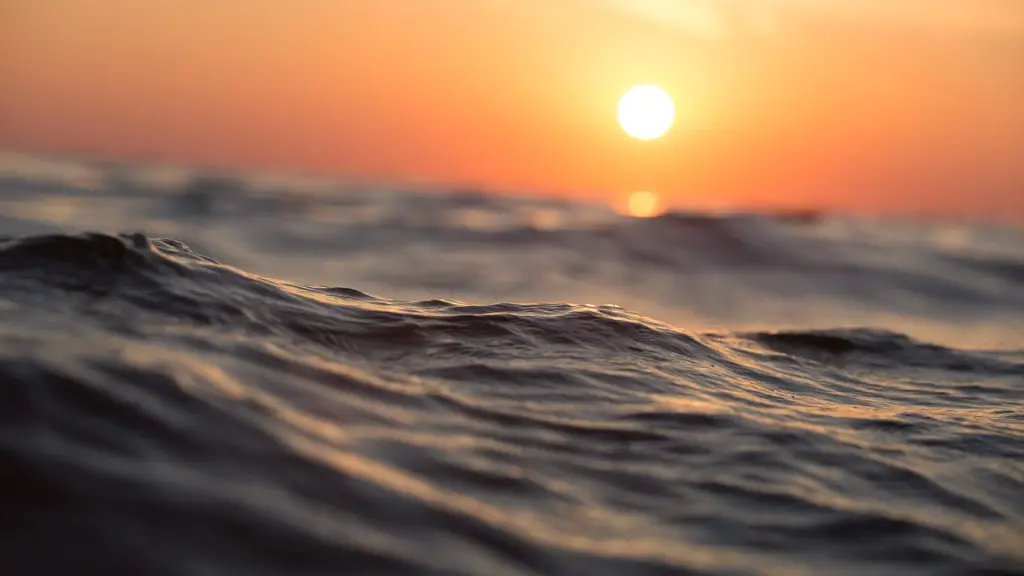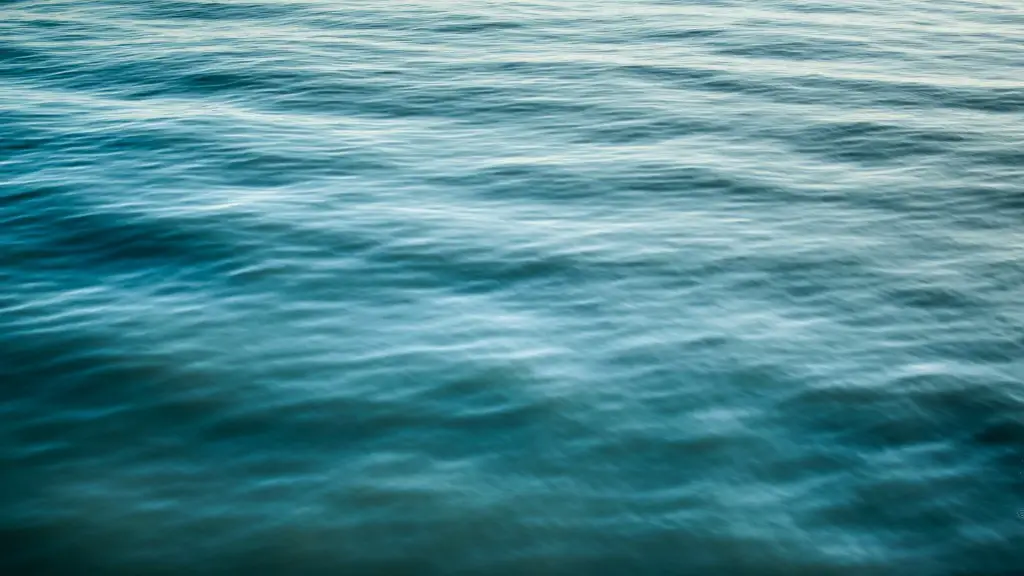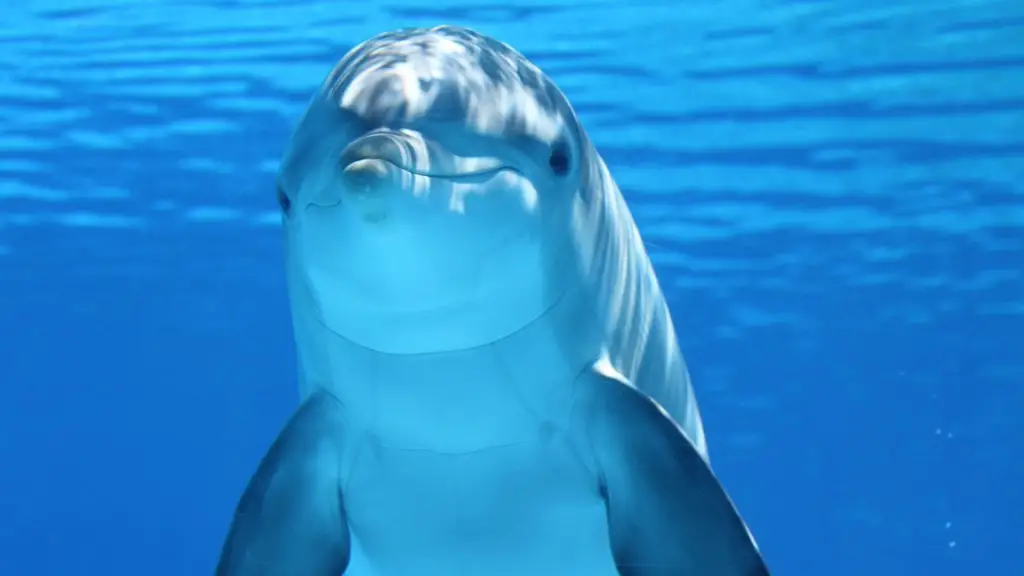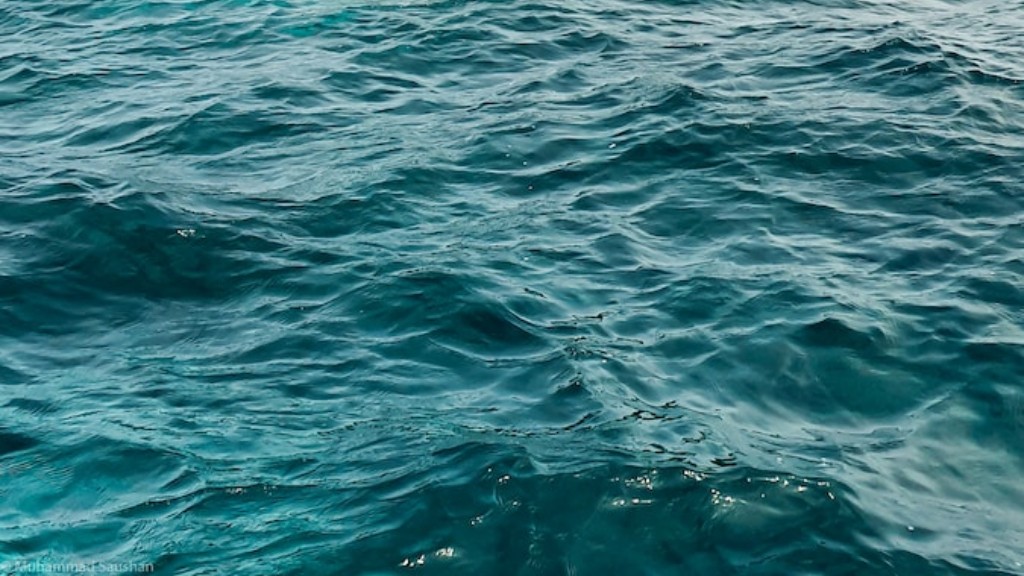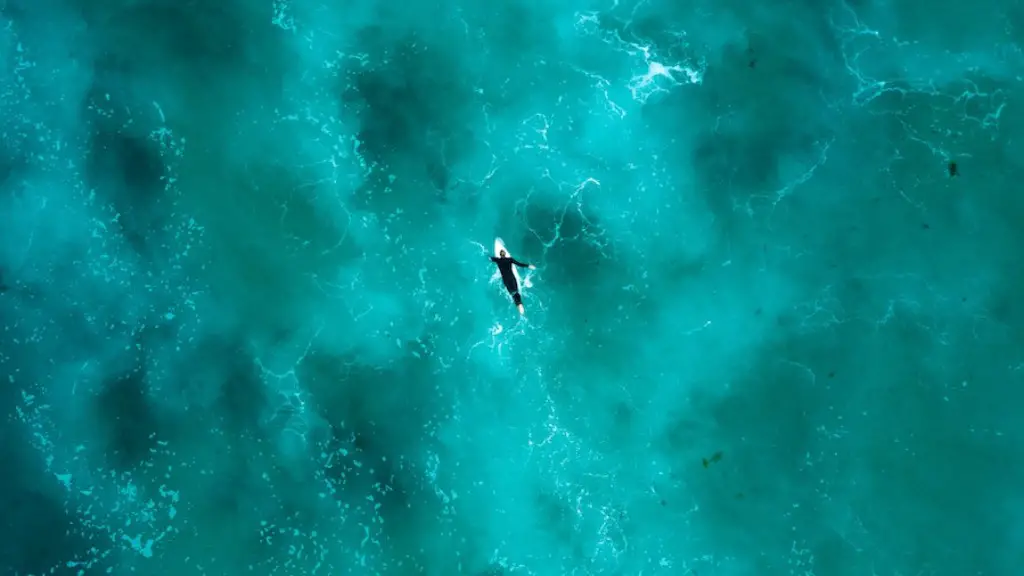In the Caribbean Sea, exists a fascinating array of aquatic life, vibrant coral reefs and dark abyssal plains. Spanning approximately two million square miles, its depths cover between 8,000 and 12,000 feet. This large and diverse sea contains many complexities, making it an intriguing area for many to explore.
From a geographical standpoint, the Caribbean Sea includes various islands, straits, and waters that connect the Caribbean region to the Atlantic Ocean. It also is connected to the Pacific Ocean through the Panama Canal, making it possible for ships to pass through from one end to the other. It’s also largely surrounded by continental shelves, which cause the steep decline in water depths. In most places it rests at depths that range from 1,000 to 6,000 feet, with many winding ridges lined with volcanoes and deep channels of unexplored ocean.
In terms of its underwater landscape, the Caribbean Sea contains many islands, ridges, and deep trenches boasting exotic marine life and thriving reefs. It’s here in the Caribbean that one can find some of the world’s finest beaches. The Sargassum seaweed also grows here, providing a safe and productive habitat for many species. The seafloor landscape also has such features as underwater volcanoes, trenches, and underlying mountain ranges. In addition, navigational routes and cables pop up across the depths of the Caribbean, highlighting the use of the region for international trade.
Due to its unique climate and especially its specific oceanography, the Caribbean Sea is home to an incredible array of aquatic life. It supports a wide variety of fish species, coral, sea spiders, and other marine animals. The area is a tropical playground that’s home to more than 6,000 species of fish and to two-thirds of the world’s coral reefs. Reefs provide home and habitat to a range of sea creatures, including lizards, crabs, lobsters, sponges, and sea stars. Thus, a vibrant ecosystem is supported by these deep and complex waters.
Though it may seem vast and bottomless, much of what’s below the surface in the Caribbean Sea remains unknown. Its trenches have not been explored and its depths continue to remain a mystery and a phenomenon worth exploring. The hydrogen sulfide, black smoker chimney, and microbial life that lie in this strong current are fascinating, showing us how the power of the ocean can be harnessed to work in our favor.
In order to understand the Caribbean Sea, it’s essential to understand the complexity of its environment. Wind, waves, hurricanes, and other unpredictable occurrences can make this area a powerful place and we must respect that power. To find out more, it helps to look at the many resources available. Navigational charts and in-situ observations provide valuable insights and help to uncover what lies beneath the surface.
Unique Ecosystems in the Caribbean Sea
The Caribbean Sea is teeming with life, and it’s not just the fish and coral that makes it so special. The area has its own unique ecosystems, including mangrove forests, seagrass beds, and coral reefs. All of these habitats are essential for the functioning of the Caribbean Sea, providing food and structure for its inhabitants. The mangrove forests are particularly interesting and play a vital role in protecting the coastline from erosion and providing essential habitat for wildlife. Seagrass beds are also abundant in the Caribbean Sea and are essential for the health of the environment, as they absorb and store carbon, provide a nutrient rich food source for local species, and offer a wide range of habitats for many other species.
The area is also well known for its coral reefs, which are incredibly rich in biodiversity. The coral reefs of the Caribbean support an amazing array of life, including many fish species, crustaceans, corals, and sponges. They also offer refuge and shelter for these creatures, helping them to survive.
Threats to the Caribbean Sea
Despite the incredible life and beauty of the Caribbean Sea, it faces a wide range of threats. Pollution, overfishing and destructive fishing practices, and the effects of climate change can all have a negative impact on the marine ecosystems. Pollution affects water quality and wildlife, and overfishing can deplete fish populations and fish habitats. Additionally, climate change affects ocean temperatures and acidification levels, which can harm coral reefs and other aquatic habitats.
The Caribbean is also home to some of the world’s busiest shipping lanes, making it a sensitive target for large container ships and other boats that may cause damage to the seafloor. As a result, the Caribbean is vulnerable to illegal fishing, poaching, and poaching of endangered species. Programs like C-IMPACT are helping to protect the Caribbean Sea and its inhabitants, by reducing the amount of pressure on the environment and promoting sustainable fisheries.
The Caribbean Sea is an incredible area worth protecting, and has much to offer in terms of discoveries and explorations. From the remarkable coral ecosystems, to the dark trenches and underwater volcanoes, the Caribbean Sea is a constantly evolving landscape that offers something new to explore each day.
Managing Resources in The Caribbean Sea
To protect and maintain the beauty of the Caribbean Sea, managing its resources is a key component. In order to do this, the community has to partake in activities like establishing marine protected areas, protecting seabeds from destructive fishing practices, and managing fisheries. That way, the environment is preserved in its beauty and the sea creatures that inhabit its depths can continue to thrive.
In addition, educating the public about the threats and importance of the Caribbean Sea is also essential. By raising awareness and fostering respect for the marine environment, we can ensure that the Caribbean Sea continues to be a safe and productive ecosystem for the many species living there.
How Technology Can Help Protect the Caribbean Sea
Technology is playing an increasingly important role in the conservation of the Caribbean Sea. Organizations are using data and technology to track and monitor marine species, helping to protect them and their habitats. Additionally, technologies like remote sensing and satellite imagery are being used to identify potential threats and monitor potential areas of degradation. This information can then help scientists to create models that map out the effects of climate change on the region, making planning for future activities easier.
By gathering data on marine species and their habitats, scientists can also have earlier warnings of emerging threats. As a result, they can take proactive steps to mitigate potential threats, such as large-scale dredging or fishing, before they become more serious problems.
Finally, technology is also being used to improve collaboration and the sharing of information in the Caribbean region. This can be done by creating platforms that make it easier for people to share data, photos, and analysis. Such data can help to build an understanding of the region and its needs, which enables more coordinated efforts to protect and manage resources.
What We Can Do
The Caribbean Sea is an incredibly important area, which has a huge impact on wildlife, the environment, and the economy. It’s therefore essential that its inhabitants take steps to ensure that the Caribbean Sea continues to be a safe and protected area for all.
On an individual level, there are a number of simple steps we can take to help protect the Caribbean Sea. For example, implementing sustainable fishing practices and avoiding activities such as poaching and overfishing can ensure that marine species survive. In addition, choosing sustainable packaging and reducing waste and pollutants can also play a role in protecting the environment. Finally, educating others about the importance of the Caribbean Sea and its wildlife is also a vital step in the right direction.
The Caribbean Sea is a special and vibrant area that provides a home for a variety of species. Through proactive management and understanding of its complexities, we can help to protect the Caribbean Sea and its inhabitants, ensuring that its beauty and diversity continues to be enjoyed and appreciated for many years to come.
